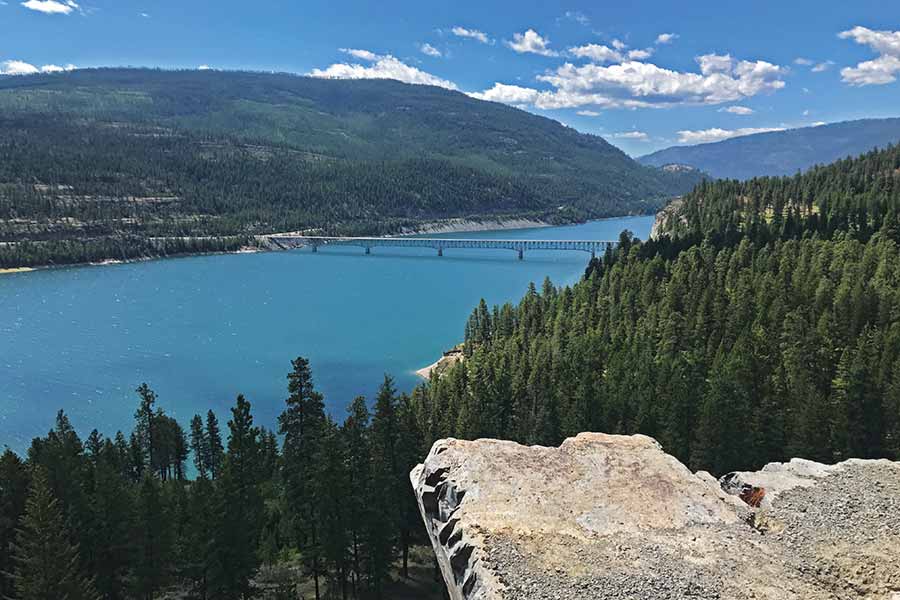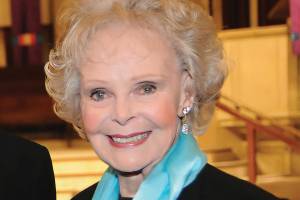By Mike Cuffe
Heartbreaking voices from the past drive my passion for Columbia River Treaty! You can hear them, too. They have been amplified to the world via a YouTube video.
Do a Google search on: Columbia River Treaty, Documentary by Mike Cuffe, and hear “Voices” like:
Alice Beers, the retired schoolteacher, who named Lake Koocanusa behind Libby Dam. She combined Koo for Kootenai River, Can for Canada and USA.
Rexford’s first lumberjack, Mayor Jack Parish.
Storekeeper Leo Collar, who later served as county commissioner.
Legendary Bill Fewkes, general store owner who mailed smoked fish to Hollywood stars John McIntyre and wife Jeanette Nolan because they ad-libbed “Fewkes Store at Rexford” into a Wagon Train episode.
That YouTube video originated as a radio documentary I made as a journalism senior project in the winter of 1968-69. I feared my hard nosed classmates would laugh and call it corny. Instead, I got a round of applause from the class and an A from Don Miller, a revered University of Montana professor.
That winter was a bleak and lonely time in “old Rexford,” a nostalgic time. Most of the school children, families and working people had moved on. It was the old people that were most reluctant to leave their longtime homes, their decades-old community.
Having been born and raised in nearby Eureka, Montana, I knew those old folks. They were looking forward with concern and wonder, but also looking back with sadness and nostalgia.
“You can’t stand in the way of progress!” was the common statement all of them made bravely. Alice Beers wanted to be the last to leave. “Then I will walk out that door with my head high and a smile on my face,” she said. “But all the time she spoke with tears streaming down her cheeks.” Later, Her house was moved to “new” Rexford.
Those voices remain in my heart. They drive me forward.
I started the interviews at Christmas break, 1968, with a portable reel-to-reel tape recorder from the University of Montana School of Journalism. We clipped out sections and used scotch tape. Another “student engineer” dubbed them together for the documentary. It played on KUFM and several other commercial radio stations around the state.
Forty years later I transferred the tapes to a compact disk (CD), and in 2018 with help from a Eureka schoolteacher, Heather Dunn, we added historical photos to represent early days, plus current reservoir photos I took. I wrote a narrative about renegotiating sessions of Columbia River Treaty. The US Senate ratified CRT in 1964.
I also retain many hours of original recorded interviews with those Voices from old Rexford, also now on CD. I plan to put them on file with local libraries and at the Montana Heritage Center in Helena.
We are approaching big anniversaries relating to Libby Dam and Columbia River Treaty. President Gerald Ford attended the Libby Dam dedication ceremony on Aug. 29, 1975. As editor for the Libby Western News, I walked across the top of Libby Dam taking photos of him and other dignitaries including Montana Senator Mike Mansfield who was US Senate Majority Leader. Also present were first term Congressman Max Baucus and Gov. Tom Judge. I first met President Ford on Capitol Hill when he was House Minority Leader and I was press secretary for Congressman Dick Shoup.
The dam dedication was a major celebration, and I helped create the huge Western News special edition for it. I also helped plan emergency services with Sheriff Mike McMeekin and the Libby Volunteer Ambulance. Now thought is being given to a 50-year observance of the anniversary, and I have been asked to give an historical perspective.
The 60th Anniversary of Columbia River Treaty was Sept. 16, 2014. That date marks an automatic change in how flood protection and water release is managed. Until then, Bonneville Power Administration controlled those, but those decisions go to the Canadian side on that date unless new agreements are reached. Renegotiations or modernization efforts have been in process for the past 10 years. Lead negotiators for both sides expressed optimism that a new agreement will be reached in coming months. They spoke by video at a CSG West River Governance session I chaired in Whitefish Oct. 16-19 2023.
I have remained in close contact with CRT planning and negotiating teams since the beginning. CRT Article 13 gives Canada the “Right” to divert 1.5 million acre feet of water from the Kootenai River to the Columbia River at Canal Flats about 100 miles (160.93 km) north of the border. That amounts to 26 percent of the annual river flow. There has been no attempt to do so, Article 13 was based on the Canadian political climate of the 1950s. In general, it would not be good for the aquatic health of either river or Lake Koocanusa, especially in regard to selenium concentration in Lake Koocanusa.
Removal of 26 percent of pure snowmelt from Lake Koocanusa will increase the concentration of selenium in the reservoir. Selenium enters the upper end of the reservoir via the Elk River in British Columbia, and results from groundwater passing through coal mining waste rock 80 miles (128.75 km) north of the border. Selenium concentration in Lake Koocanusa has been referred to the International Joint Commission on Boundary Waters, but Article 13 should be removed from CRT.
Will Article 13 be removed in the “Modernization Process?” Possibly. I still believe both countries will do the right thing to eliminate the possible diversion of 26 percent of the Kootenai. Has it been worth it? Absolutely. I believe I have persuaded negotiators on both sides of the border to consider issues that would have been ignored. I believe my efforts have helped negotiators from both sides to keep on task.
Yet, I am driven by those old “Voices,” including Bill Bennett, originally the B.C. lead minister on CRT, now long retired. In 2013, Bill said to me that we can’t let anyone unravel this treaty because we won’t ever get it back together again. I wish Bill were still involved.
Reviewing material for this article gave me opportunity for deep reflection. First, I remember new school facilities built in anticipation of student growth from children of construction workers. Another Voice came from my Dad in 1964 when he told me, “they would never build that monster dam.” I was a junior in high school when my Dad couldn’t believe anyone would clear-cut and flood all that fast-growing timberland, and game habitat, and farms, ranches, hay fields and communities. But they did.
My father, Thomas M. Cuffe who was born in 1904, would be amazed that I have been involved this much; as a reporter and photographer, as a state representative and senator, as a leader of international organizations with focus on these matters, and as a somewhat regular visitor with political leaders and agencies both sides of the border. But I know he and Mom would be proud. MSN
Mike Cuffe is currently a state senator for Montana.
Advertisement
Voices From the Past Speak of Pre-Libby Dam
Some articles contain affiliate links, earning us commissions on items purchased through them. There is no additional cost to you.

Check out these great articles

Beware the Double Click! Evaluate QR Codes to Protect Against Fraud
Montana Senior News June 13, 2025
If you scan a fake QR code, your bank account, email and identity could all be at risk.

June Lockhart Turns 100
Montana Senior News June 11, 2025
Only about three out of every 10,000 Americans will reach the age of 100.
Following the Lewis and Clark Trail by River Cruise
Montana Senior News June 9, 2025
I recently retraced part of Lewis and Clark route, traveling aboard the American Cruise Lines’ Harmony.

These Resources Help Maintain Your Well-Being
Montana Senior News June 5, 2025
Health, financial and social support resources can help to maintain subjective well-being from the age of fifty until very old age.

How to Stay Cool and Save Energy This Summer
Montana Senior News June 5, 2025
If you’re like many consumers, you’re looking for energy saving solutions, but may not be aware of all your options.

Securing Your Home Network
Montana Senior News June 2, 2025
With everything from smartphones and laptops to security systems and thermostats connected to your home’s Wi-Fi, protecting your network is vital to keeping your personal information secure.
Subscribe to the Montana Senior News
Sign up to recieve the Montana Senior News at home for just $15 per year.


